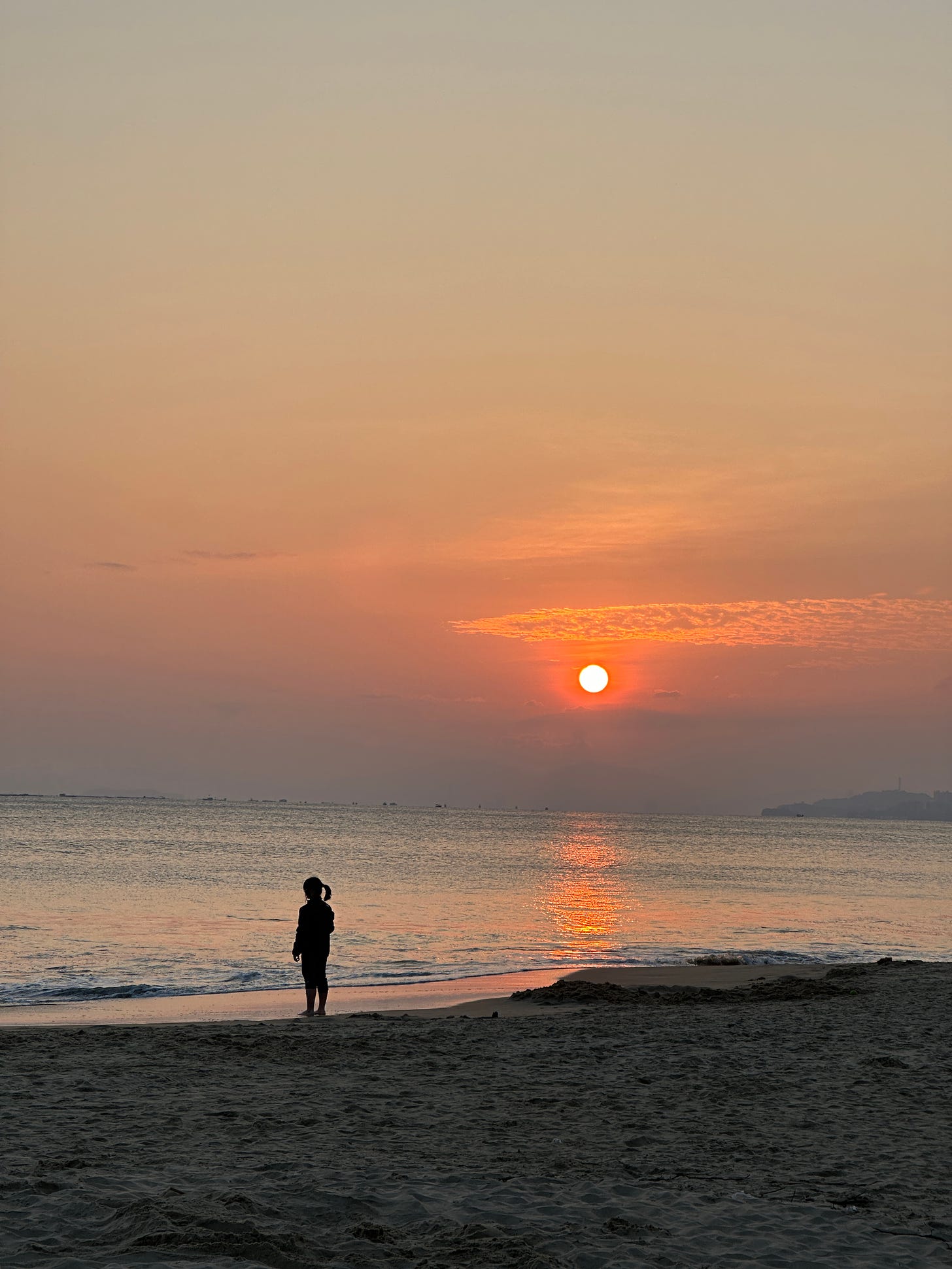Every time I’m in Sanya, I feel the urge to ignore AF’s repertoire and talk about it here. My fellow Substackers who are writing about China: are we seeing this? I can’t be the only one who is stunned by how this city is transforming.
Starting with some basics. This southernmost tip of the Hainan island is one of the nation’s favourite holiday hotspots. It is effectively divided into bays (湾), and all of them are touristy in different fonts. 亚龙湾 is the oldest with the most amount of traditional family-friendly attractions, the facilities croaky and rusty. 海棠湾 is billion-yuan-shiny, with a freshly made promenade of luxury hotels, a tax-free shopping “city” and Atlantis, a mega accommodation-aquarium-water park complex that lures in thousands of toddlers during summer breaks. Each of these deserves a separate ethnographic study, but that’s beside the point today.
The broader context is that for the past five years or so, there has been a sizeable internal migration of northeasterners or Dongbeiren (东北人) to Hainan, mainly retirees escaping the long winters and coal-industry-driven smog that gave a lot of people rhinitis, bronchitis or rheumatism. Think Florida for China’s ageing population. The influx is so huge Sanya is nicknamed 吉林省三亚市, as people consider it a municipality that belongs to Jilin, a Northeastern province where my ancestry runs. I’ve been having Dongbei cuisine so authentic I thought I was home home, eating what my parents and their parents grew up with. Harbin, another major Dongbei city, has apparently built a police station here to deal with the amount of cases involving residents from their precincts.
This tsunami of incoming Dongbei (and Northerners in general) population created new housing demands, and 清水湾 (Clearwater Bay) is born. This is what blew my mind: this whole area is almost entirely run by real estate developers. The provincial government has minimum jurisdiction (although I’m hearing talks of a handover). All public spaces are separately managed by the respective companies who built the houses in that neighbourhood. There are no speed limits or cameras when you drive, and streets are named after the developers. They build their own strip malls and maintain the cleanliness using their own workforce, each competing for potential (Dongbei) property buyers like warlords. A new social hierarchy is formed where your status and your identity directly correlates with your property.
It’s all glossy inside these enclosures. But once you drive further out, you’ll start to see how this burgeoning migrant community is encroaching on the locals. The surrounding villages, 新村镇 and 英州镇 remain underprivileged and under-serviced, with residents who rely on the primary sector. A lot of them, I suspect, were forcibly removed from grounds that are now owned by the developers. If their livelihood doesn’t depend on agricultural farming or fishery, they make up the workforce that keeps Clearwater Bay up and running: waiting tables in migrants-filled seafood restaurants, building high-rises that do not stop rising, selling durians on the street next to condos that sell for 70K a metre squared. Their attitudes to non-locals are visibly unenthusiastic. Conversing in the local dialect, they barely want to engage with people who drove the living costs up, gave them traffic jams and polluted their shorelines. On the cusp of Chinese New Year a.k.a the longest break for everyone in the country, the only highway of Hainan that connects the airport to all the bays has a daily congestion that stretches for 10 or more kilometres. This is not an island designed to accommodate three-quarters of Dongbei plus the usual tourists for two peak seasons a year.
I wonder now, with international travel opening up again, if Sanya can continue riding the COVID-accelerated boom of domestic tourism and Clearwater Bay can retain its appeal. The new batch of apartments are set to finish in 2025. What will this place look like by then?
A belated welcome to Slowburn, a new section of Active Faults if you’ve made it this far. I present to you a bubble of my occasional remarks on an aspect of China that needs a bit of attention. Think of it as a patch of soil at the back of AF where I attempt to grow some crooked veggies. I’ve taken another Archive of Our Own tag, “slowburn”, to indicate that this will be irregularly updated and quite frankly a long, long shot. A shot at airing a side of China that’s not necessarily in the newspaper headlines.
Thanks for being here and enjoy!
Em
*Cover photo: some of the best 锅包肉 I’ve had outside of Dongbei. If you know you know.






I’m kind of glad the island is mountainous because it’ll put up at least some natural geographical impediments to ceaseless development
I think luxury/retail people really care about Hainan! :)